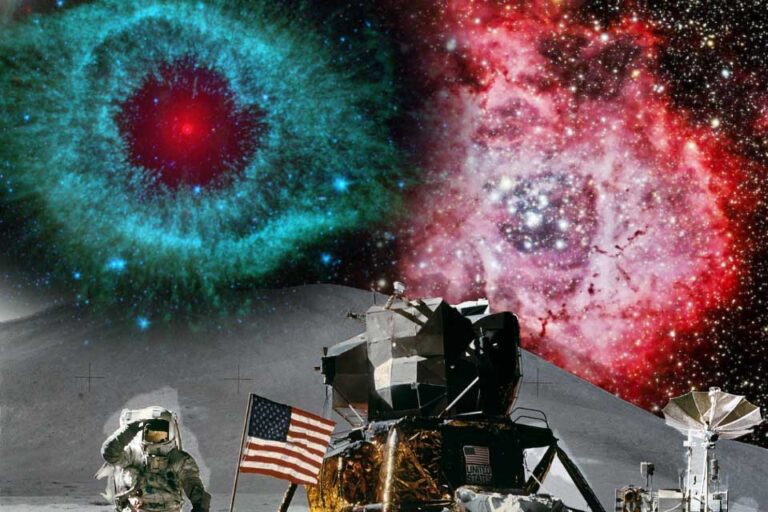Beyond or Close to the Speed of Light - 10 Fastest Things in The Universe
Everything that exists is the Universe, including all of space and time, and all of the matter and energy that space and time contain. The universe is a vast and mysterious place that is constantly expanding and evolving, filled with things that we can’t even imagine. Some of these things are incredibly fast Beyond or close to the Speed of Light (fastest in the Universe), speeds that are difficult for us to comprehend.
Contents
Toggle
Close to the Speed of Light or Beyond - Fastest Objects
In this article, we explore ten of the fastest things in the universe, from the microscopic world of neutrinos to the cosmic expanse of relativistic jets which are either beyond or close to the speed of light.
1. Light
Light is a form of electromagnetic radiation, which is a type of energy that travels through space as oscillating electric and magnetic fields.
Light travels at the speed of light in a vacuum, which is approximately 299,792,458 meters per second (or about 186,282 miles per second). This is the fastest speed that any object can travel in a vacuum. But there are many objects that can travel very close to the speed of light.
The speed of light is always the same or constant in nature, no matter who is measuring it or how fast they are moving. This is a consequence of special relativity, which is a theory that describes the behaviour of space and time at high speeds.
The speed of light has a number of important implications for physics. For example, it is the speed at which information can travel through space, and it is the speed at which gravity waves propagate. The speed of light also plays a role in the behaviour of particles in quantum mechanics.
In addition to its theoretical importance, the speed of light has a number of practical applications. For example, it is used in the measurement of distances, in the operation of lasers, and in the transmission of information through optical fibres.
2. Tachyons
Source: CC BY-SA 3.0 DEED
Tachyons are hypothetical particles that are faster than light, which means they would have imaginary mass. Tachyons were first theorized in 1967 by Physicist Gerald Feinberg.
According to special relativity, particles with mass cannot travel faster than the speed of light in a vacuum. However, tachyons are thought to be able to travel faster than the speed of light because they have negative mass.
This means that they would experience time dilation in reverse, so the faster they move, the slower time would pass for them.
If tachyons exist, it would mean that they could travel through time. This would have a number of implications, including the possibility of time travel. However, there is no evidence that tachyons exist, and they remain a subject of theoretical physics.
3. Cosmic Rays
Cosmic rays are extremely energetic particles that travel through space at a speed that is very close to the speed of light, the fastest speed that anything can travel in the universe.
These particles can originate from sources such as exploding stars and supermassive black holes.
Cosmic rays are also very massive, compared to other particles like electrons and protons. Because they are so massive, they travel slower than or close to the speed of light.
As they travel through space, they can interact with the Earth’s atmosphere, producing showers of particles that scientists can study on the ground or from satellites.
The study of cosmic rays helps us to understand the universe better. For example, we can learn more about how supermassive black holes work and how the universe was formed.
They can also help us develop new technologies, such as medical imaging devices and explosives detection systems.
4. Blazar Jets
Source: CC BY 4.0 DEED
Blazar jets are powerful streams of particles that can travel at speeds close to the speed of light. They are ejected from the centres of supermassive black holes and can extend for millions of light-years.
Blazar jets are thought to be produced by the accretion of matter onto the black hole. The intense gravitational forces near the black hole accelerate the matter to speeds close to the speed of light.
As the matter travels outwards, it emits a powerful beam of radiation. Blazar jets are some of the most energetic objects in the universe.
Blazar jets are very important for our understanding of black holes. They provide evidence for the existence of black holes and help us to understand how black holes work. Blazar jets are also thought to be responsible for the production of some of the highest-energy particles in the universe.
5. Gamma-Ray Bursts
Gamma-ray bursts (GRBs) are the most powerful explosions in the universe, releasing more energy in a few seconds than the Sun will emit in its entire lifetime. It is believed that they are either caused by the collapse of massive stars or the merger of neutron stars.
Amazingly, some components of GRBs can travel faster than the speed of light, a phenomenon known as superluminal motion. While the exact mechanism remains a topic of research, it’s clear that GRBs are among the fastest phenomena in the universe, outpacing even the most nimble cosmic runners.
The mass of a GRB is thought to be very large, and it is estimated that some GRBs can eject as much as 10% of the mass of the Sun. This massive amount of mass is accelerated to extremely high speeds by the explosion, and beyond or close to the speed of light it can travel for millions of light-years.
6. Gravitational Waves
Source: CC BY 4.0 DEED
Gravitational waves are very fast invisible ripples in space that are produced by accelerated massive objects, like black holes, neutron stars etc. They travel at the speed of light, which is the fastest speed in the universe.
The strength of gravitational waves is very weak, and they are difficult to detect. However, in 2015, scientists at the Laser Interferometer Gravitational-Wave Observatory (LIGO) made the first direct detection of gravitational waves.
This was a major breakthrough in physics, and it confirmed one of the key predictions of Einstein’s theory of general relativity.
The detection of gravitational waves has helped scientists study some of the most extreme events in the cosmos, such as the merging of black holes and neutron stars.
7. Neutrinos
Neutrinos are subatomic particles that are incredibly tiny and have very little mass. They are electrically neutral, meaning they have no charge, and they rarely interact with other particles, therefore they are very difficult to detect.
Neutrinos are produced in a variety of ways, including in the Sun, in supernovae, and in nuclear reactors. They travel at speeds very close to the speed of light, which is the fastest speed in the universe.
Neutrinos are thought to play an important role in the evolution of the universe. They may have helped to create the first stars and galaxies, and they may continue to play a role in the formation of new stars.
8. Parker Solar Probe
The Parker Solar Probe is a spacecraft that was launched in 2018 to study the Sun’s outer atmosphere or corona.
It is the fastest spacecraft ever built, and it will travel as fast as 690,000 kilometres per hour (430,000 miles per hour) at its closest approach to the Sun. This is about 0.064% of the speed of light which is not at close to the speed of light.
The Parker Solar Probe’s high speed is necessary because the Sun’s corona is very hot and dense. The Parker Solar Probe is protected from the Sun’s extreme heat by a heat shield made of carbon-carbon composite.
The heat shield is designed to withstand temperatures of up to 1,370 degrees Celsius (2,500 degrees Fahrenheit).
The Parker Solar Probe has made several close approaches to the Sun, and it has collected data that has helped scientists to better understand the solar corona. The probe is expected to continue to make close approaches to the Sun until 2025.
9. Mercury
In our Solar system, Mercury is the smallest planet and it is closest to the Sun. It is also the fastest planet in our solar system, orbiting the Sun at an average speed of about 47.9 kilometres per second (29.8 miles per second).
This is about 0.000063% of the speed of light which is actually very slow and not close to the speed of light.
The reason for the high speed of Mercury speed is due to its closest to the Sun. The Sun’s gravity pulls on Mercury very strongly, and this force causes the planet to orbit the Sun at a high speed.
Mercury is a rocky planet with no atmosphere. It is also very dry, with almost no water on its surface. The surface of Mercury is covered in craters, which were formed by meteorites and asteroids colliding with the planet.
Mercury is a very difficult planet to study because it is so close to the Sun. The Sun’s glare makes it difficult to see Mercury from Earth. However, spacecraft have been able to visit Mercury and take pictures of its surface.
10. Relativistic Jets
Source: CC BY 4.0 DEED
Relativistic jets are narrow beams of particles that are ejected from some of the most energetic objects in the universe, such as black holes and neutron stars. These jets can travel at speeds very close to the speed of light, which is the fastest speed in the universe.
The particles in relativistic jets are accelerated to very high speeds by the strong gravitational forces that exist near these objects. Once the particles are ejected from the object, they travel in a straight line until they encounter an obstacle, such as a cloud of gas or another object.
Relativistic jets can have a significant impact on their surroundings. They can heat up the gas in their path, and they can also create shock waves that can damage nearby objects. In some cases, relativistic jets can even destroy entire galaxies.
Relativistic jets are a fascinating phenomenon that is still not fully understood. However, they are a powerful tool for studying the most extreme objects in the universe.
















